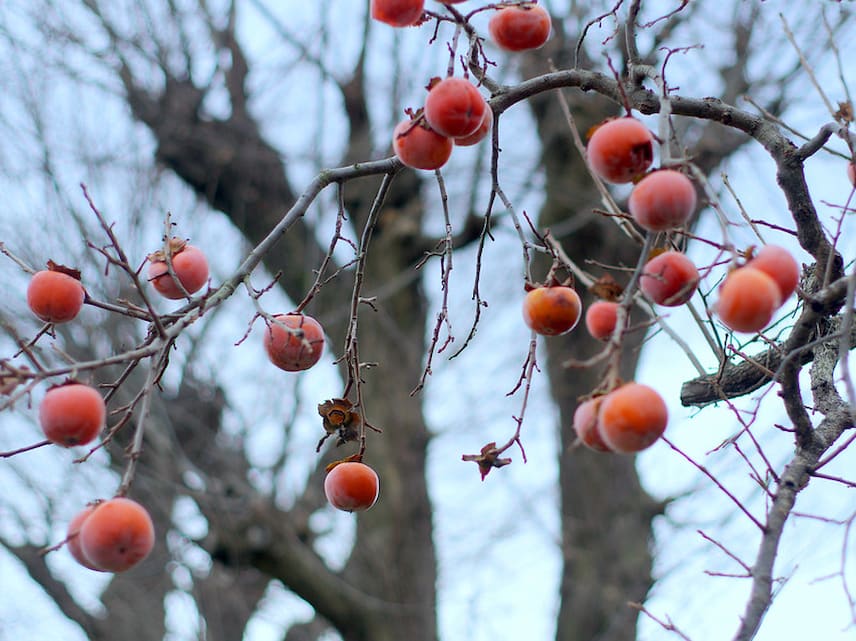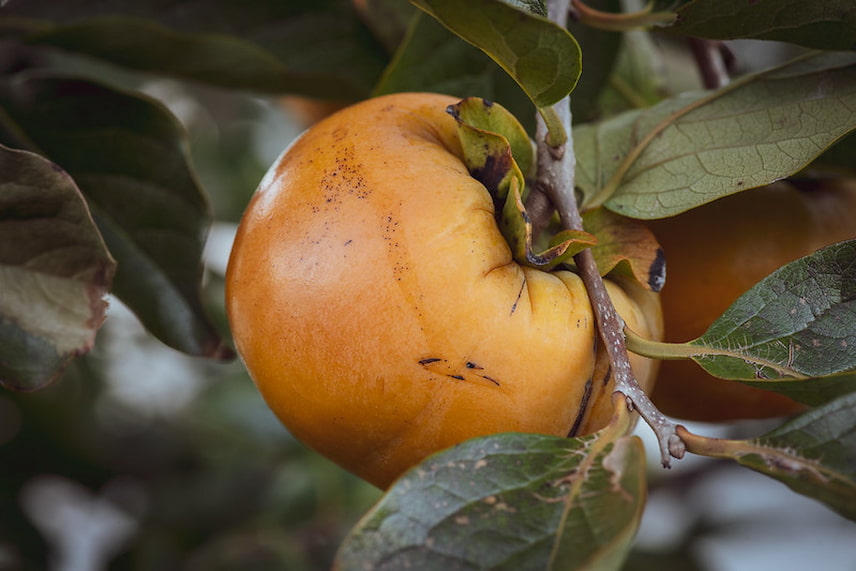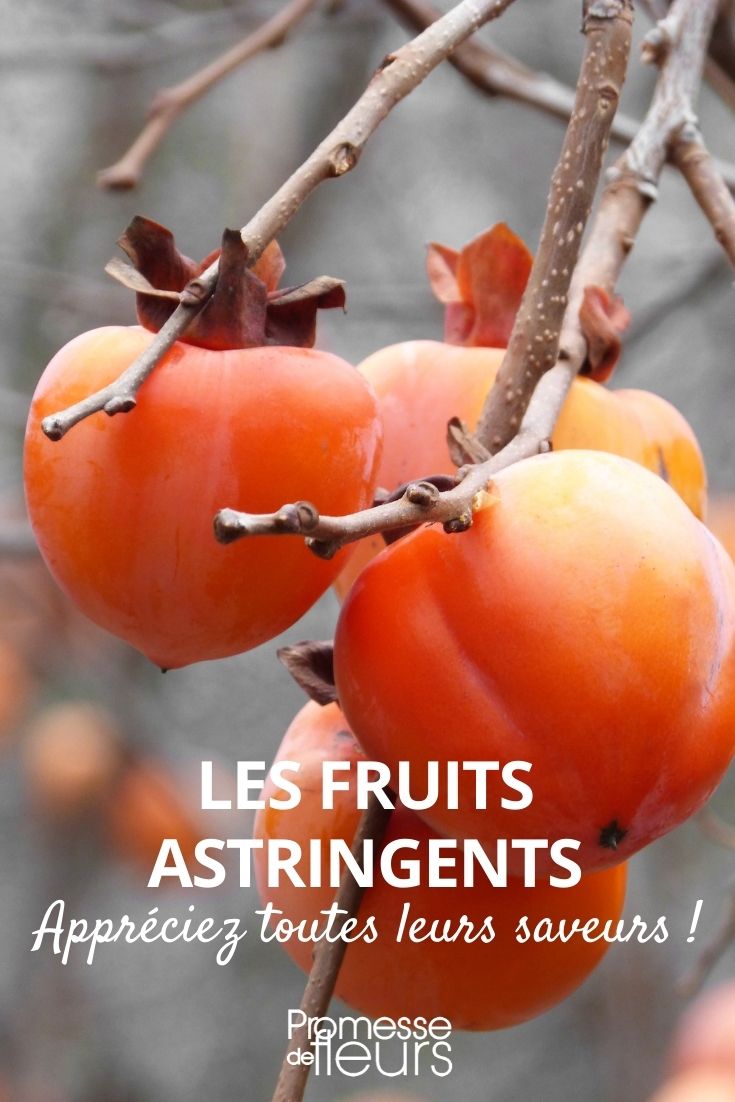
Astringent fruits
Everything you need to know about fruits that are only eaten when over-ripe
Contents
Anyone who has never tasted a sloe cannot know that particular sensation of astringency. And those who have already tried it grimace at the mere thought of biting into that little wild plum with its lovely purple colour.
Like the sloe, many other fruits have that astringent taste when eaten, to the point of feeling the palate and lips contract. These fruits are called astringent and are only edible when harvested over-ripe, most often after first frosts. Discover with us astringent fruits, their characteristics and how to harvest them to fully appreciate all their flavours.
What is an astringent fruit?
To define the term “astringent”, the Larousse dictionary draws a comparison with a wine too rich in tannic acid that constricts the taste papillae. What applies to a wine can also apply to certain fruits which, when tasted, produce a strange sensation. Concretely, the tannic acid in these fruits combines with amylase, a protein present in saliva, and causes mucous membranes and lips to contract and tingle. A very unpleasant sensation that makes us spit out the forbidden fruit.
Yet these astringent fruits are neither toxic nor dangerous. They simply need to be eaten at the right time to be fully appreciated, that is, when they are over-ripe.
When to enjoy these astringent fruits?
Rest assured, astringent fruits such as persimmon or medlar can be eaten. They can even delight your papillae with their subtle, delicate flavour. You only need to wait for the right moment to pick them, namely their over-ripening. In short, when fruit is more than ripe, softened, without being spoiled or rotten. In fact, fermentation occurring in the heart of the fruit transforms the sour flesh into flesh rich in fructose. This stage of fruit ripening is generally intensified by the first frosts, which act as an accelerator.
To know when to harvest, observe your tree. Birds are not mistaken and swoop with relish on these astringent fruits only when they contain a well‑sweetened pulp! Hurry — birds adore these juicy fruits.
You can also harvest fruit while still firm. Simply place them in a cellar, away from light and humidity, for 3 to 4 weeks. But they will be less sweet.
Two astringent fruits to grow in your garden
Among main representatives of astringent fruits are:
Medlar
This small brown drupe is fruit of the common medlar (Mespilus germanica), a tree with pretty white spring flowering. Ideal for informal hedgerow, medlar rarely exceeds 3 metres. Undemanding about soil and site, medlar is also very hardy.

The medlars are only eaten after first frosts
Its fruits appear in May, but are only harvested over-ripe after first frosts. Common medlar must not be confused with the Japanese loquat (Eriobotrya japonica) with orangey fruits that ripen in May–June. Discover our complete guide to the Japanese medlar.
→ Find out more about medlar in our full fact sheet: Medlar: planting, maintaining and harvesting fruit
Japanese goumi
Fruit of the Japanese goumi: this small red fruit, rich in vitamins and antioxidants, is sweet, tangy and slightly astringent. It is harvested in July–August and is eaten in compotes or jellies. As for Japanese goumi (Eleagnus multiflora), it is a bush about 3 metres high and wide with a fragrant flowering, ideal for informal hedgerow.

Slightly astringent fruits of the Japanese goumi are eaten in compote or jelly
Read also
Hoshigaki or dried persimmonPersimmon, an astringent fruit... yes, but
When it comes to astringent fruits, persimmon comes first. It is the fruit of the persimmon tree (Diospyros), a tree of the Rosaceae family, hardy to -18°C and very ornamental in autumn for its attractive reddish foliage. Depending on earliness of variety, some fruits are harvested from November. But generally, harvest takes place in winter, from December to February, when fruits are fully orange and softened. Wait for first frosts. Over-ripe, persimmon flesh has a viscous, sticky texture and is eaten with a teaspoon.

Persimmons are harvested between December and February
Persimmon tree thrives in sun and in rich, well-drained soil. It can reach 6 metres in height with a 5-metre spread and is very productive. Best known is Diospyros Kaki, ideal for small gardens because of its compact growth, the Diospyros kaki Costata with fruits without pips, or the Kaki Muscat, the Chinese persimmon, a self-fertile variety.
If you dislike the soft texture of over-ripe persimmon, turn to the Diospyros kaki Fuyu or Fuyu persimmon, a non-astringent variety.

Fuyu persimmons, fruits of Diospyros kaki fuyu, are not astringent
Persimmons of this species, orange and the size of an apple, are harvested firm at the end of October. They can be eaten immediately without waiting for over-ripening. It is also a particularly ornamental tree, reaching 6–10 metres, hardy to below -15°C, best planted in sun and sheltered, in rich, well-drained soil.
- Subscribe!
- Contents
































Comments